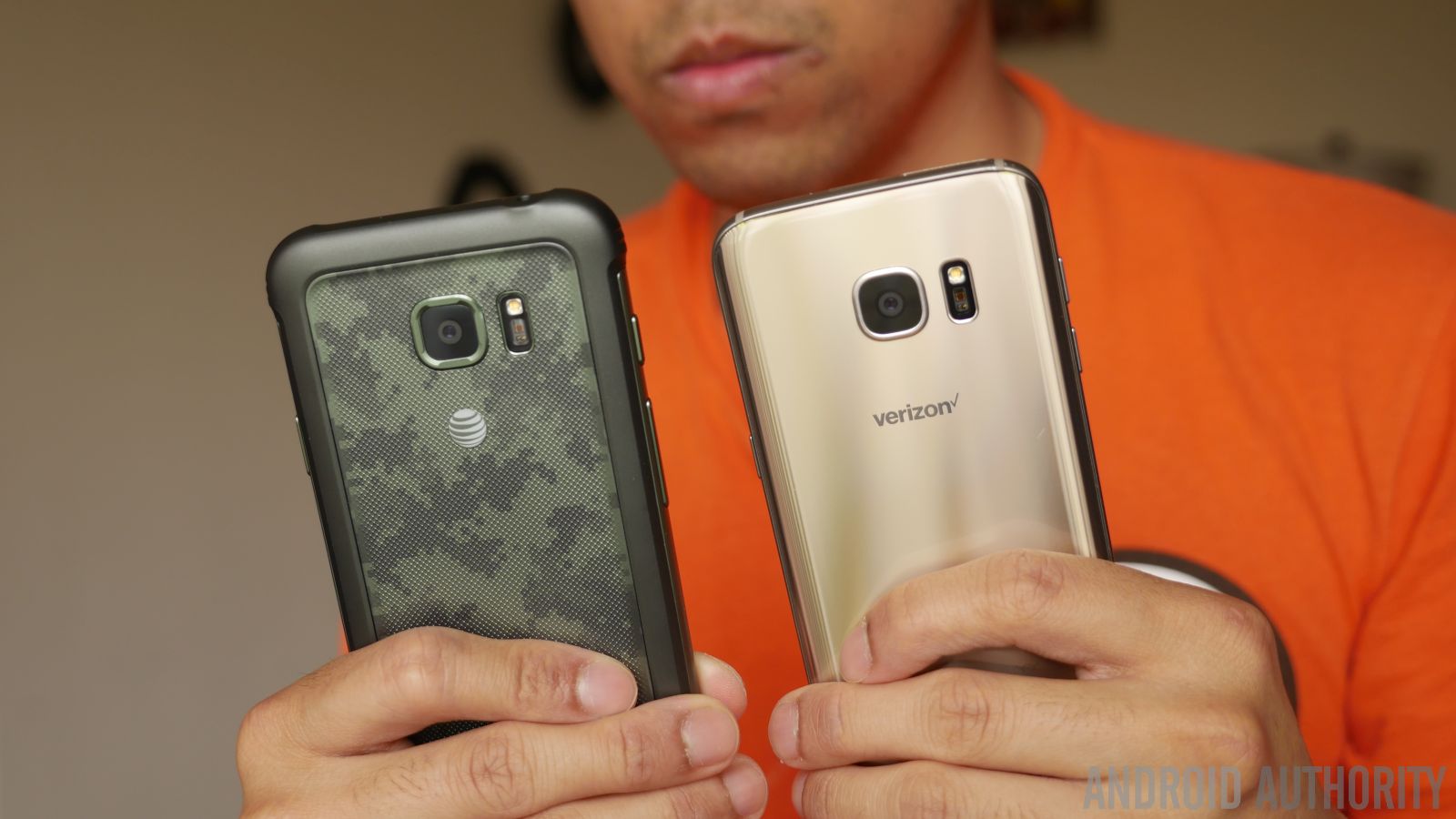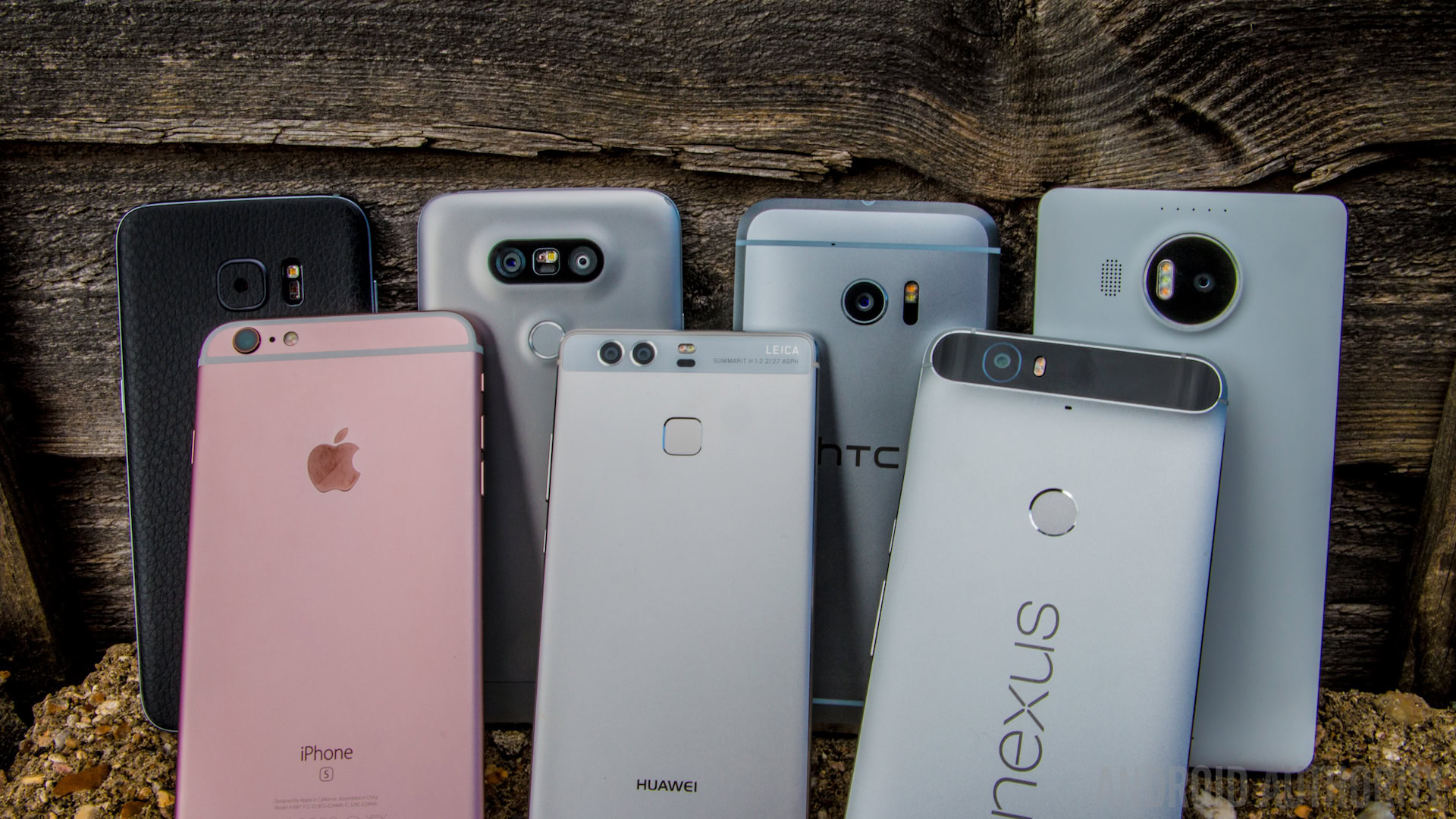Affiliate links on Android Authority may earn us a commission. Learn more.
Galaxy S7 Active vs Samsung Galaxy S7 quick look

Water resistance made its return with the Samsung Galaxy S7, which was something that people sorely missed last year with the introduction of Sammy’s revamped design for the Galaxy S6. In a way, that’s exactly what differentiated the Galaxy S6 Active so much, just because it offered that and a few other goodies to make it stand out enough.
- Samsung Galaxy S7 Active Hands On
- Samsung Galaxy S7 Review
- Samsung Galaxy S7 Edge Review
- Samsung Galaxy S7 vs S7 Edge
For this year’s Active smartphone, it might not seem as interesting because we already know that the water resistant construction is back with the Galaxy S7 – while continuing to stick with the new premium design language. You might be contemplating about the two smartphones, especially given that their specs nearly match one another, but trust us, there are promising reasons why to still think about going with the Galaxy S7 Active.
Design
Frankly, it’s brawns versus beauty in this comparison. Even though the specs sheets indicate otherwise, the Galaxy S7 is simply the more appealing looking of the two. That’s obviously attributed to the premium design it’s employing with its glass-meets-metal package. It looks pretty appealing no matter how you look at it, more so when you place it alongside the S7 Active.
Then again, the beefier size of the S7 Active gives it more of that protective quality that you won’t find in many phones. With its MIL STD-810G rating, the phone is meant to withstand abuse that the standard Galaxy S7 can’t achieve. For starters, its padded sidings allow the S7 Active to survive drops from a height of 5 feet onto the hard pavement – whereas with the Galaxy S7 it’ll probably crack a lot faster, since it’s more fragile in nature.
Some people might not be wowed by the water resistant of the S7 Active at first, especially when Samsung brought it back to its flagship this year, but when you add the fact that it’s protected from other environmental conditions, such as extreme temperatures, dust, and low pressure/high pressure, it merely goes to show that the S7 Active is built like a tank.
Display
On paper, the two phones share a 5.1-inch 1440 x 2560 Super AMOLED display. By now, Samsung has built a solid reputation of delivering outstanding qualities with its AMOLED screens – so you can expect true-to-life colors, wide viewing angles, and strong potency when it comes to brightness. In looking at the two displays side-by-side, it’s really tough to notice anything different between them.
Still, the only thing we can tell you in this quick look is that the Galaxy S7 Active is fashioned with a “shatter resistant screen.” That helps in safeguarding the display in the event it’s accidentally (or purposefully) dropped, whereas with the Galaxy S7’s display, it’ll more than likely crack under the pressure.
Hardware
Ask almost anyone, and they’ll probably agree that the S7 Active is just the standard S7 with a rugged design instead. While that’s certainly true, there are still several more things that make the two different from one another. The first relates to the battery, a 4000 mAh capacity in the S7 Active, which attributes to its thicker chassis. At the same time, too, you can expect it to offer longer battery life in the process. However, wireless and rapid charging are available with the two.
In its short history, the Active line has never received a fingerprint sensor. Well, that’s until now, as the S7 Active is the first in the rugged line to offer it. The fingerprint sensors on both phones act similar to one another, whilst also doubling as the home button, but instead of being flanked by capacitive buttons like the S7, the S7 Active relies on huge physical buttons instead.
Being released mid-year roughly, you’re not going to find anything new with the computing power of the Galaxy S7 Active. In fact, it’s the same chipset used by the US bound S7 variants – so that’s a quad-core Qualcomm Snapdragon 820 chipset coupled with 4GB of RAM and the Adreno 530 GPU. Both handsets are currently boasting 32GB of internal storage, with room for expansion thanks to the microSD card slots they’re packing along.
Out-of-the-box for the first time, the S7 Active doesn’t show any signs of strain with its operational performances, so it’s very much like the S7. That’s good news, mainly because we’ve been using the S7 since its releases, and even now after months of use, it’s still running exceptionally fine.
Camera
Yet again this is another example of how closely related they are! When we look at the camera configurations of the two, there’s nothing that’s really different with them – except that the camera lens is slightly more flush with the S7 Active. What we have on both is a 12-megapixel sensor with an f/1.7 aperture lens, phase detection auto focus, OIS, and LED flash. The front-facing cameras are identical as well, so that’s a 5-megapixel one on both.

At first, we believed that the S7 Active was unique because it offered manual video controls when using “Pro” mode, but we soon realized that the S7’s camera app has been updated to offer this feature as well. Essentially, there’s nothing really separating the two cameras here, which isn’t a bad thing per se, since the S7’s camera has proven itself to be an excellent all-around performer.
Software
The software experience, too, is identical with TouchWiz running on top of Android 6.0.1 Marshmallow. From the visuals, to the features that power users crave, the two phones deliver the same experience that covers the gamut. Some folks might not take fancy in what TouchWiz offers, but regardless, it’s still one of the few customized Android experiences that offers true side-by-side apps multi-tasking.
The single difference with the two experience, however, is seen in the “Activity Zone” that’s made available to the S7 Active when its physical “Active” key is pressed. It’s a portal that presents us with some useful information and quick access to some stuff (the flashlight for example), but you can still obtain pretty much the same stuff on the S7 by just looking around the software.
Conclusion so far
Pricing is always a finicky thing for a phone that’s a variant of another, highly prized flagship. That’s the situation where the S7 Active finds itself because on paper, there are only a few things that make it different from a specs standpoint over the usual Galaxy S7. For the extra $100 you’ll be dishing out to buy the S7 Active over the S7, you’re getting a smartphone that has a rugged design and beefier battery – and that’s pretty much it.
At roughly $700 outright, the standard Galaxy S7 isn’t cheap at all, so the $800 higher cost of the S7 Active might cause some folks to really consider their actions. Ultimately, though, it’ll come down to whether or not you really need the extra protection that the Samsung Galaxy S7 Active offers.
- Samsung Galaxy S7 Active Hands On
- Samsung Galaxy S7 Review
- Samsung Galaxy S7 Edge Review
- Samsung Galaxy S7 vs S7 Edge
What do you think of the Galaxy S7 Active and do you prefer the brains of the Active or the beauty of the original Galaxy S7 family? Vote in the poll and let us know your views in the comments below!